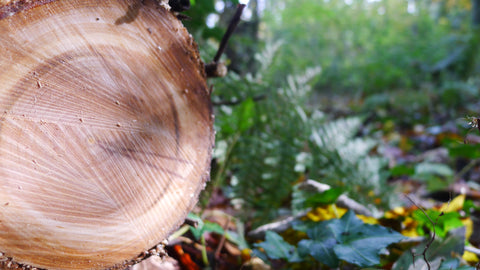Process

The process starts with a tree. In most cases, I source my wood from fallen trees that would otherwise rot and return to the earth. I simply take the wood on a short detour, giving it a new life in someone’s home. I cut a small log with a saw and begin the process of creating a form with a carving axe. Most of the time, I do my axing either in the woods itself, using old stumps as my axe block, or in the back garden of my home studio.
Once I create a rough shape with the axe, work with the knives begins. I use two types of knife – a hook knife, which has a curved shape and is used to hollow the bowls of spoons, and a sloyd knife, which is used on all other parts of a form. Everything is carved in hand, and I use special knife grips and carving techniques to keep my fingers safe.


A very sharp knife can leave an almost polished finish on wood, so I do not use any sandpaper. Instead, after the carving is complete and the wood has dried, I burnish the wood with a smooth stone. This presses any exposed fibers closed, creating an even smoother finish. Finally, I coat each piece with food grade tung oil. This is a curing oil that creates a hard, water resistant surface. I apply three coats of oil, with each layer being allowed to cure before the next is added.
Each wooden item that I carve is unique - the patterns in the grain vary due to the position the spoon occupied in the log, and the nature of the tree itself. Eating with a wooden spoon is a real treat - clanking sounds of metal against ceramic are replaced with soft, resonant taps; the weight of the spoon is so light it feels like an extension of your hand; the spoon easily slips out of your mouth because of the way the thickness of the bowl tapers towards the tip. Eating with a wooden spoon connects you with the earth.
